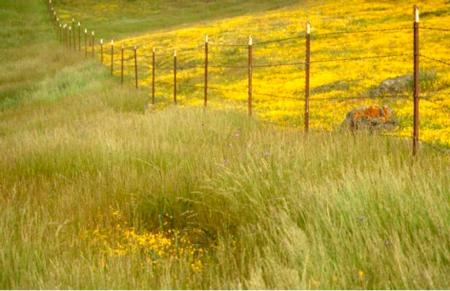Cars, Cows, and Checkerspot Butterflies

Photo Credit: Stuart Weiss, Creekside Center for Earth Observation. Stu@creeksidescience.com
Some of our region’s hills have patches of serpentine soil - rocky soils high in metals and low in nitrogen and other nutrients important to plant growth. These soils support a community of plants – many of them rare – adapted to these challenging conditions. Some of the South and East Bay’s serpentine soils are home to host plants for the rare Bay checkerspot butterfly. In the 1990s, biologist Stu Weiss noticed that the butterfly population he was studying at Coyote Ridge Open Space Preserve (in southern Santa Clara County) was declining. His investigation revealed that the decline was due to non-native grasses invading the serpentine community, and that this invasion was linked to smog from Highway 101. Normally, non-native grasses fare poorly in serpentine soil, but the smog was depositing nitrogen in the hills and allowing these grasses to invade and out-compete the smaller, slower-growing natives. Dr. Weiss found that well-managed grazing was key to the preservation of the butterfly and the rare wildflowers that support it.
Read the full paper.


